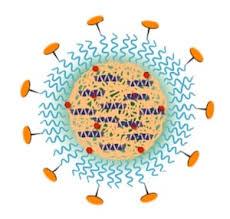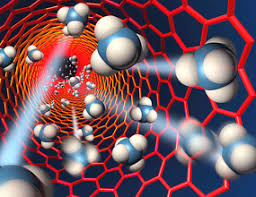Thermal instability (nanoparticles) in nanostructured nanostructures based on nano-microelectronics Ph.D.
Researcher and author: PhD student : Afshin Rashid
Note: The thermal instability of the nanoparticles is due to the thermal phenomena caused by the shrinkage of the material structure in the nanostructured structure. As you know, (heat has E energy), which is 03 - its energy proportional to ambient temperature. This energy equals KBT.
In this respect KB is a Bolterman constant and a constant value equal to and T the temperature in Kelvin. Thus, when materials are placed in different environments, the electrons are given energy (-0 01 * 0 / 33JK) by heat. Now consider a property of a particle that generally depends on (volume of nano-particle V). The energy of this property is U and is a function of V. When the volume is small enough that KBT is larger than U, then the conditions will be thermally unstable.
For example, a nanoparticle of a particular size may be lifted by the thermal energy of which the particle is large enough. Consider a bit of zirconia. Its density can be equal to a particle in diameter (0011 3-m Kg). At room temperature, the thermal energy may increase (0.5 * 01 nm ) to a height equal to that diameter, by simple calculations it can be deduced that environmental energy, a particle of zirconia 5 nm in diameter, can jump to a height of more than 0 m. Of course, this game does not have physical reality numbers, but it does show that the nanoparticles are not fixed and are moving from the surface. The thermal instability resulting from the oscillations plays an important role in the interpretation and investigation of some physical properties such as magnetic properties and optical absorption of nanoparticles.
The process of thermal instability (nanoparticles) in the modification of the structure and structure of nanomaterials
All atoms in the nanomaterials at any temperature give a certain amount of energy due to their oscillations. The amplitude of this oscillation is not the same across all nanomaterial atoms. Rather, surface atoms have a greater range of oscillations due to the greater spatial freedom they possess. This can explain the strange behavior of solids in reducing their melting temperature. Reaching the average value of the atomic vibration amplitude to a certain coefficient of the constant value of the nanoparticle network, these vibrations can no longer be increased without damaging the nanoparticle network. Thus, as the mean vibration amplitude increases to a greater extent, the material is ejected from the crystal lattice and melts. Surface atoms have higher mean oscillations and can increase the number of surface atoms if they occur. The average amplitude of the oscillations of the total atoms of the material have a clear effect. So the small dimensions of the material to the extent that the ratio of surface atoms to the number of atoms of substantial reach, the average amplitude fluctuations of the nano molecular significant increase will, in these conditions, with increasing instability of the surface material, the melting temperature of nanomaterials reduced will do.
Conclusion:
Thermal or thermal properties are one of the most important physical properties of nanomaterials. Study of Thermal Properties of Nanomaterials It is important to study the thermodynamic and kinetic properties of nanomaterials and their surface properties. To date, thermal investigations of nanomaterials have focused more on investigations of grain growth kinetics, melting temperature of nanoparticles, specific heat, thermodynamics and kinetics of nanomaterials.





